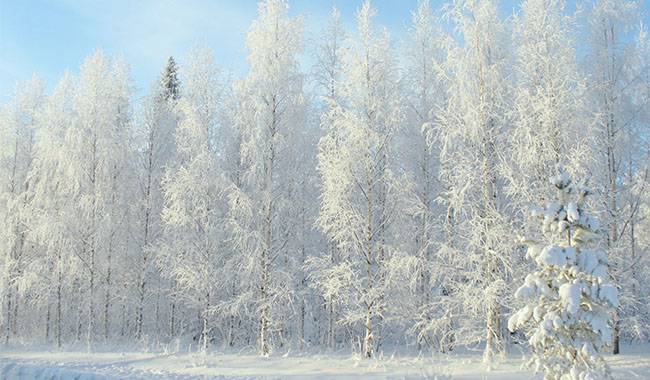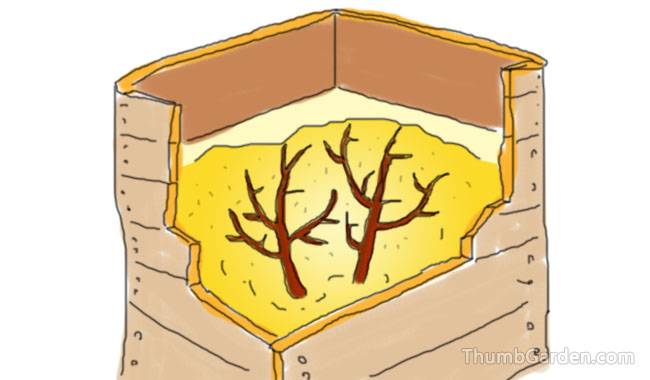
We are all accustomed to winter delighting us with heavy snowfall as we sled down the hills, ski, and skate on flooded rinks. We also love our winter gardens and orchards when they are backed with a thick blanket of snow.
However, this is not always the case as sometimes there are snowless winters. Such as in 2000-2001, it was cold but there was almost no snow, causing difficulties for the plants.
WHAT ARE THE DANGERS OF A SNOWLESS WINTER FOR PLANTS?
A snowless winter is dangerous because the soil will freeze very deep, thus destroying the root systems of most or all fruit crops, including pear trees and stones. First of all, of course, our heat-loving crops covered with fleece will take a hit but expect to throw a thick layer of snow on top: blackberries, curd, and strawberries. How can we say, even gooseberries can suffer frost in snowless and frosty winters.
Worst of all, cultures that have become extinct in particularly bad winters, until the snow layer (same humidity), this time may be completely destroyed because their roots are also dead and they will not manage to regenerate above-ground parts from the buds on the roots.
WHAT CAN I DO TO PROTECT THE PLANTS?
If frost comes and there is no snow, not even predicted by the forecasters, then you need to act quickly and wisely. Don’t waste a minute and don’t catch everything at once or it will only get worse.
First, watch out for fruit trees and berry bushes. Be sure to cover all their bush areas and root zones with a thick layer of humus or sawdust; this layer should be very thick, not just a few inches, but at least 6-8inch (15-20cm).
For shrubs, you need to fill the root zone in this way – a radius of about 40-60inch (1-1.5m) from the center of the shrub, and for trees – equal to 80-120inch (2-3m), and even more than 120inch (3m) if the tree is more than 15 years old.
Protection of shrubs and fruit crops
Start with the most delicate crops, such as blackberries, raspberries, apricots, then to apples, plums, etc. Don’t forget that the above-ground parts can withstand severe frosts, but even the roots of winter-hardy crops that don’t get snow are already capable of dying in a 5°F (-15°C) frost if it lasts 5 or 6 days.
To retain the smallest snow particles, be sure to put the spruce paws on top of the mulch, they will retain the snow perfectly. They will strengthen your insulation and not let it fly around in sharp gusts of wind.
In the future, often visit the area where trees and shrubs grow, and if a little snow fell, try to collect it and additionally cover the plants. And remember, the snow should remain loose, fluffy, this is the only way to keep it warm.
Protect the vines
Once the shrubs and trees are safely covered, you can start mulching the vines. It is recommended to do this on the same day because if there are only a dozen shrubs and as many trees on site, it will take no more than a few hours to mulch them.
Vines require mandatory shelter: lemongrass, Actinidia, and grapes. Be sure to remove them from the supports and lay them on sawdust or non-woven covering material, or on boards, so that the vine does not touch the soil. On top of the vines, it is also necessary to spread a non-woven material, and cover it with a layer of sawdust or humus 15-25 cm thick, then put spruce paws to trap the snow.
In such a “pie”, the vine should reliably survive until spring and, most importantly, provide protection against mice, which can often be used as common poison bait. Be sure that most of the buds on these plants with this method of mulching will survive even a snowless winter.
Protect the roses
Now let’s pay attention to the roses, the best option is to try to bend them to the ground and fill them with sawdust, but if that doesn’t work, you can take five-liter plastic bottles, cut off their bottom and top, place the rose bush there, fill the top with sawdust, compact it as much as possible, and then cover the top with a non-woven covering material.
Do not forget that the roses can be cut even to a height of 6-8inch (15-20 cm); this part of the buds is enough for the bush to recover. The main thing to remember is to reinforce the material with something so that it does not fly from the wind into the neighborhood.
Cover heat-loving crops inboxes
At the end of the day or the next day, you can cover crops such as large-leaved hydrangeas, rhododendrons, peonies, bramble flowers, etc. They do not always survive winter with enough snow. If there is no snow, they certainly will not survive.
Why did we postpone covering them? Yes, because it requires special preparation, i.e. the construction of wooden boxes. They can be slatted and it is acceptable to take them off a normal wooden box, only to stuff them so that they become like a box but without a bottom.
Once such a box is ready, the shrubs, if necessary, should be tied with twine so that, by placing them in the box, they do not break the branches. Next, fill the box to the top with whatever is on hand – sawdust, dried leaves, or even a rag (if nothing else is on hand). Once the box is accurately filled, it should be wrapped in plastic wrap to separate all the gaps and secure it so that the wind doesn’t blow it away.
The top of our box can be left uncovered, but a few spruce paws should still be placed. Later, once it starts snowing, throw some more, too: first at the bottom of the box, then it can be completely filled without harm, and most importantly – in the spring we will quickly remove the mulch so that the soil and plants begin to warm up, wake up after hibernation and get new shoots.
By the way, the dismantled boxes should not be dismantled into individual boards, they may be quite useful in the future, mainly to be put in a dry place or just dried and put in the shed or garage until winter.

Protection of strawberries
Some people do everything simply, pouring water in the plantation, literally freezing strawberries in ice, which is quite acceptable. The main thing is to fence the site from the beginning so that the water does not spread over the whole plot, and the process of pouring water does not turn out to be too expensive.
If you are afraid of flooding the plantation with water, or if this sounds terrible for you, then cover the strawberries with a layer of sawdust with a thickness of 8inch (20 cm), on top of which you can throw more fir tree legs or lay down non-woven mulching material, such protection must be “effective” and the strawberries will be reliably protected in the winter without snow.
This is the danger of a snowless winter, and this method described above will protect the crop from its disadvantages. If you have other methods of plant protection, please write about them in the comments, it is interesting and useful for everyone to gain new valuable knowledge.







